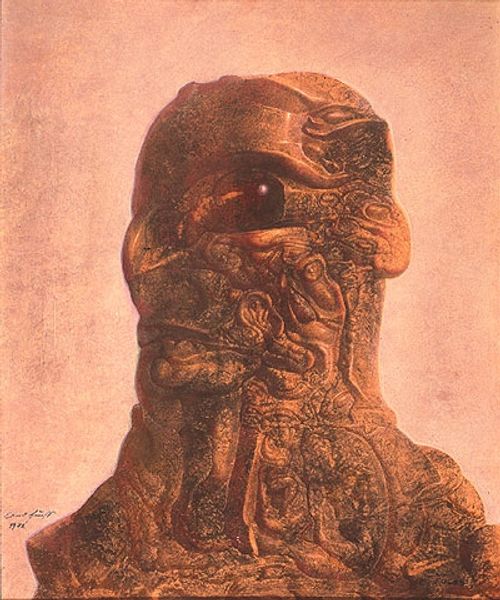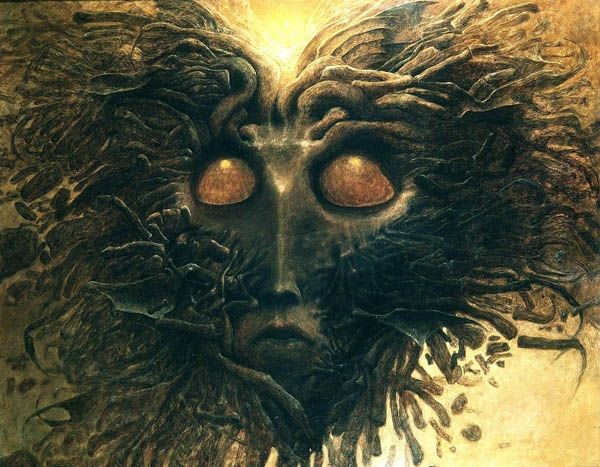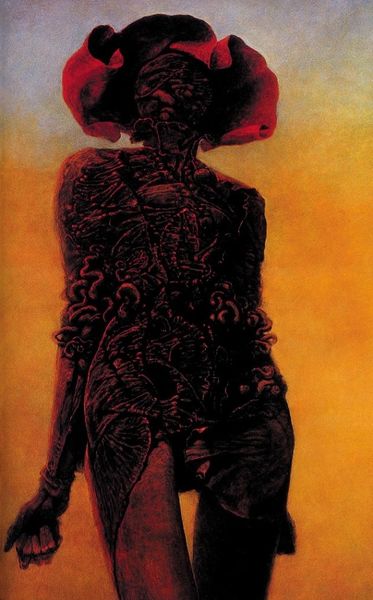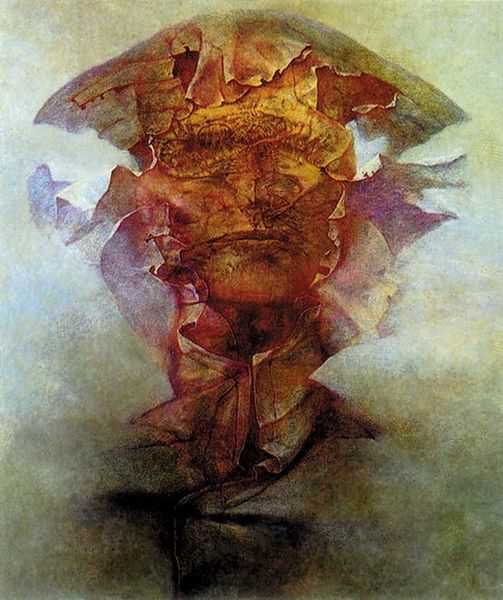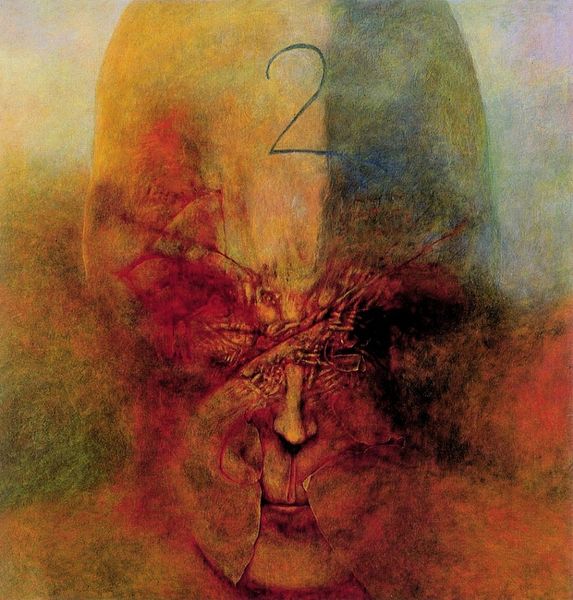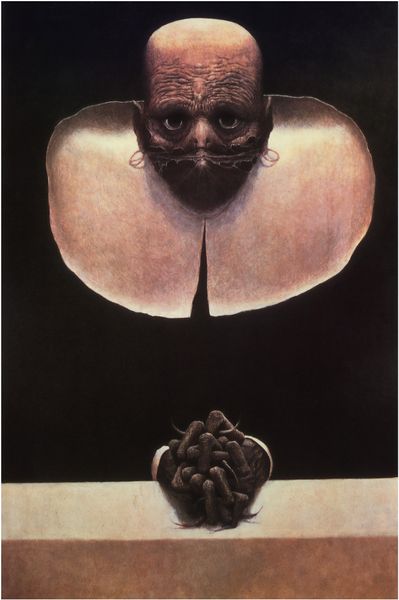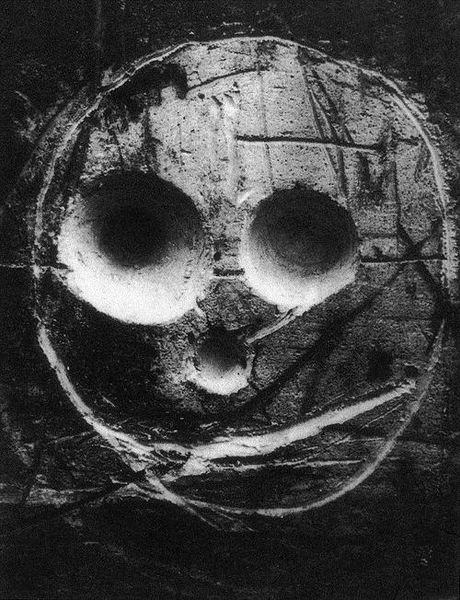
oil-paint
#
portrait
#
oil-paint
#
gothic
#
figuration
#
neo-expressionism
#
matter-painting
#
symbolism
#
surrealism
#
gothic
Copyright: © The Historical Museum in Sanok (Poland) is the exclusive owner of copyrights of Zdzisław Beksiński's works.
Curator: Here we have an untitled work by Zdzislaw Beksinski, likely created with oil paint. Beksinski’s oeuvre often touches on Gothic and Surrealist sensibilities, creating disquieting yet compelling imagery. Editor: It’s…unsettling. Those eyes, glowing like embers, pierce right through you. And the texture – is it flesh? Decay? It’s fascinatingly grotesque, whatever it is. Curator: That tension, that visceral reaction, is precisely what situates Beksinski within a lineage of artists grappling with the darker aspects of the human condition. Think Goya, or perhaps some of the more macabre Symbolists. His art emerged in a Poland still under the shadow of Soviet control; you can feel that weight, that sense of suppressed anxiety, permeating the work. Editor: I’m drawn to how Beksinski uses oil paint here. It isn't about smooth illusionism, is it? It’s like he's building up layers, almost sculpting the surface. It emphasizes the materiality, the physical presence of this… thing. The means of production underscore the horror it provokes, don't you think? Curator: Absolutely. The very act of creation becomes a reflection of the disturbing subject matter. He rejected most interpretations of his art, insisting it was simply what it was, yet clearly he was engaging with collective fears, societal traumas. He tapped into something primal, and, in turn, the audience found him and his art in spite of censors. Editor: This use of 'matter-painting' makes me think about how it relates to art as labor. Beksinski’s dedicated manual process stands apart from mass production; it becomes something rare and highly valued precisely because it carries his dedication of labor into these uncomfortable emotional spaces. The social currency derives from confronting rather than averting this horror, which is an unusual inversion. Curator: Indeed. It stands as a testament to art's ability to not just reflect but also process our collective anxieties and to achieve recognition beyond institutional constraints. Editor: Ultimately, whether a study in political constraint, decay or materiality, it forces us to confront uncomfortable realities about existence, itself. Curator: An apt observation, prompting us to look further than just aesthetic or artistic traditions.
Comments
No comments
Be the first to comment and join the conversation on the ultimate creative platform.
